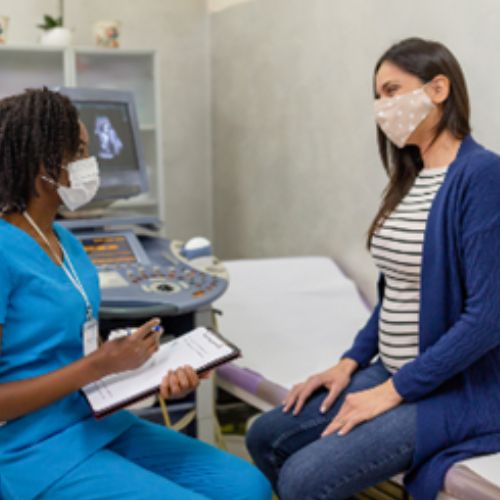Florida Perinatal Quality Collaborative
Substance Use Disorder (SUD)

Key Points
- Identify life-threatening conditions, stabilize, and refer them as needed
- High recidivism rate during the postpartum period; most drug-related deaths occur during this time period.
- Initial workup includes a urine drug screen, CBC, LFTs, and STI testing.
- Validated scales for opioids include OOWS, SOWS, and COWS
- Signs of opioid intoxication include drooping eyelids, constricted pupils, reduced respiratory rate, scratching, and head nodding.
- Signs of opioid withdrawal include:
- Yawning
- Rhinorrhea
- Piloerection
- Perspiration
- Lacrimation
- Tremor
- Mydriasis
- Hot/Cold flushes
- Restlessness
- Vomiting
- Muscle twitches
- Abdominal cramps
- Anxiety or irritability
- Psychosocial needs assessment, supportive counseling, links to existing family support, and referrals to community services.
- Determine infant status, available childcare, and custody needs.
- Provide initial management of withdrawal symptoms with loperamide (diarrhea), promethazine (N/V), and ibuprofen (myalgia). Clonidine can be given to reduce blood pressure.
- For opioid use disorder, consider starting long-term opioid replacement with Buprenorphine or Methadone. Provide a prescription for Naloxone overdose for overdose prevention.
Synopsis
Substance use disorder in pregnancy and postpartum continues to be a leading cause of maternal death in the U.S. Even with appropriate treatment during pregnancy, there is a high recidivism rate during the postpartum period; most drug-related deaths occur during this time period. Providing universal screening for substance use disorders, including in the postpartum period, is essential for identification and proper management. Once identified, determining readiness for accepting and acting on available resources will help guide the plan. Life-threatening conditions should be managed first, including overdose and suicidality. Signs of opioid intoxication include drooping eyelids, constricted pupils, reduced respiratory rate, scratching, and head nodding.
Signs of withdrawal include:
- Yawning
- Rhinorrhea
- Piloerection
- Perspiration
- Lacrimation
- Tremor
- Mydriasis
- Restlessness
- Vomiting
- Muscle twitches
- Abdominal cramps
- Anxiety or irritability
Then, a psychosocial needs assessment should be started and consultation with an established multidisciplinary care team should be initiated to provide coordinated clinical pathways. Information and a referral to supportive counseling and community-based organizations will aid their next steps. Shared decision-making regarding treatment settings should be done with the choice of a clinician’s practice, an intensive outpatient treatment or partial hospitalization program, a residential addiction treatment facility, or an inpatient hospital. Connecting the patient with the setting choice will help with the transition. Also, discuss the readiness to start SUD treatment with the intent of recovering from SUD.
Management
Determine the extent of the substance use disorder and whether it is a mono or polysubstance use situation to better manage the presentation. Initial workup includes and urine drug screen, complete blood count, liver function tests, and sexually transmitted infection screening. Symptomatology can be improved with loperamide (diarrhea), promethazine (N/V), and ibuprofen (myalgia). Clonidine can be given to reduce blood pressure. Once any life-threatening conditions are treated and the patient is stabilized, conduct a psychosocial assessment and determine readiness for change. Consult a multidisciplinary team to facilitate all aspects of care including counseling, referrals, medication-assisted treatment (buprenorphine, methadone), and infant needs assessment.